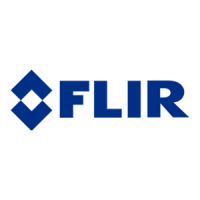
 Loading...
Loading...
Do you have a question about the FLIR E50 and is the answer not in the manual?
| Resolution | 240 x 180 pixels |
|---|---|
| Image Storage | SD card |
| Focus | Manual |
| Image Frequency | 60 Hz |
| Accuracy | ±2°C or ±2% of reading |
| Digital Camera | 3.1 MP |
| Digital Zoom | 4x continuous |
| Measurement Presets | Yes |
| Laser Pointer | Yes |
| Battery Operating Time | 4 hours |
| Spectral Range | 7.5 – 13 µm |
| Operating Temperature Range | -15°C to +50°C |
| Storage Temperature Range | -40°C to +70°C |
| Thermal Sensitivity | <0.05°C at 30°C |
| Field of View | 25° × 19° |
| Temperature Range | -20°C to +650°C |
| Display | 3.5" LCD touchscreen |
| Image Modes | Thermal, MSX |
| Battery Type | Li-Ion battery |
| Weight | 0.825 kg |